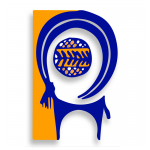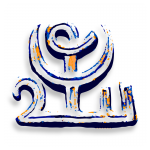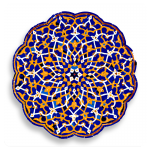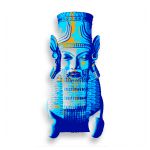In every country or region, despite the high variety of foods and meals, there is a base. In many European countries it is potato, in East Asian countries it is rice, and in my country since the prehistoric era, it is wheat. The bread made of wheat or as we call it in Persian NAN is not only the base of our foods and nutrition in Iran, but it has a sacred place among Iranians. I remember that my grandparents and my parents told me to never throw away bread with other garbage, or if you see a piece of bread on the floor you should take it off the floor and put it somewhere else where it would not be disrespected, emphasizing on the importance of bread.
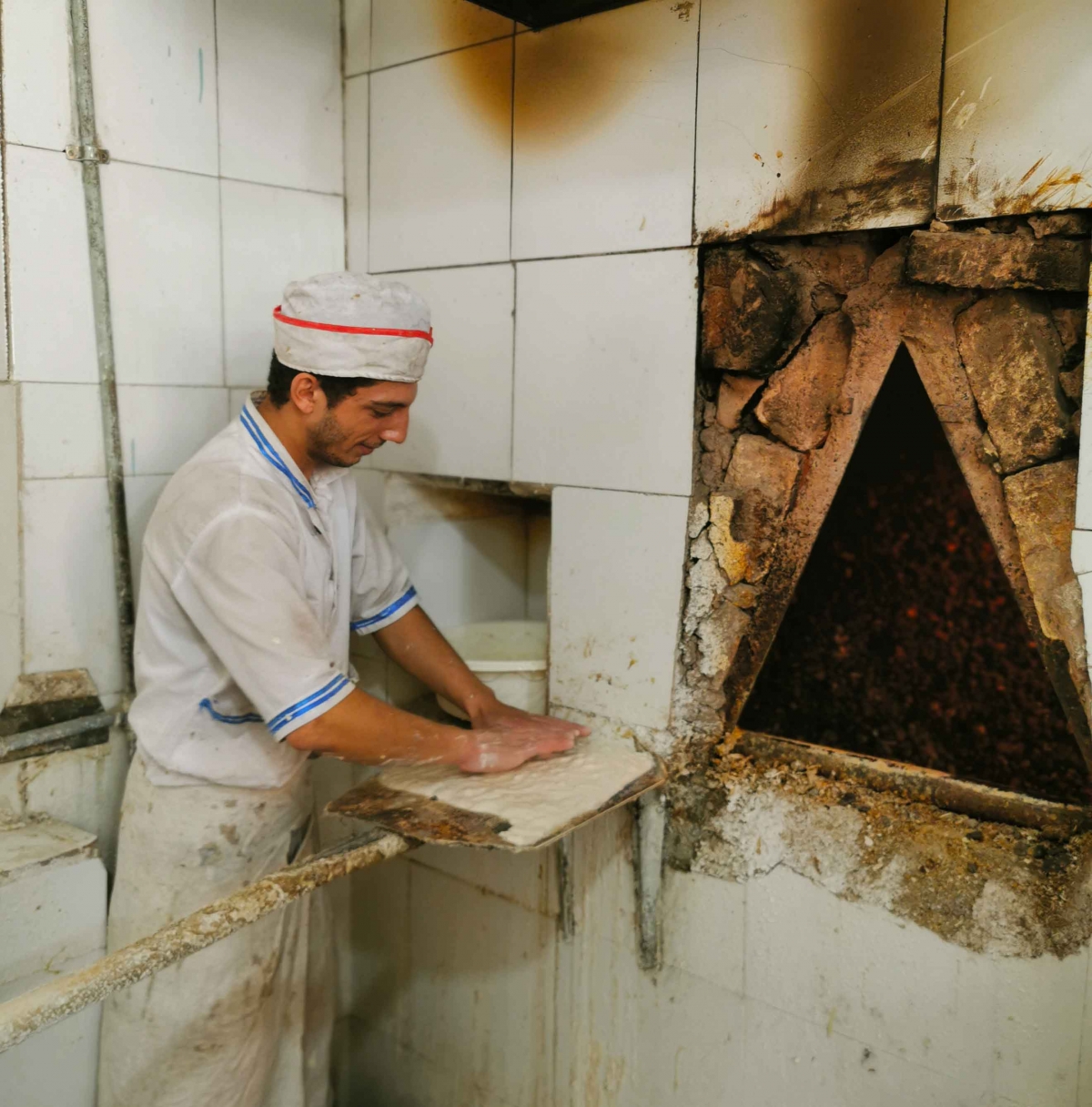
sangak Bread
When it comes to the variety of bread in Iran, you can always face surprises in different regions of the country. Some of them are well known in every corner of Iran, like Barbari, a bread came with the dynasty of Qajar in the 19th century, Taftoon which is often flavored with saffron and a small amount of cardamom powder, and may be decorated with seeds such as poppy seeds, or Sangak known as the highest quality Iranian bread invented by Sheikh Bahai in 17th century made on the bed of small stones. Yet other types of bread generally known as Traditional Bread are more considered as the specialty of each region or the nomads, backed by different methods and ingredients.
Walking in the streets of Iranian cities, do not hesitate to take a look inside one of these bakeries where they are constantly backing bread during the day, and have a small chat with the backers or Shaters in Persian. This is a must do experience in Iran.
While on the first look of the menu in Iranian restaurants you might have the impression that most of the Iranian dishes are served with rice, there are a high variety of Iranian dishes that are not served with rice but with bread. In the recent years with the flourishment of tourism in Iran and their great appetite for Iranian food as well as the changes in the taste of the new generations of young Iranian for street food or restaurants, the food industry has also taken a shift to more original and traditional recipes and more varieties of Iranian food. This has helped the menu of many restaurants to evolve from the list Kebabs (grilled meat or chicken) to many other dishes and appetizers and sweets that before could only be found inside the Iranian houses.
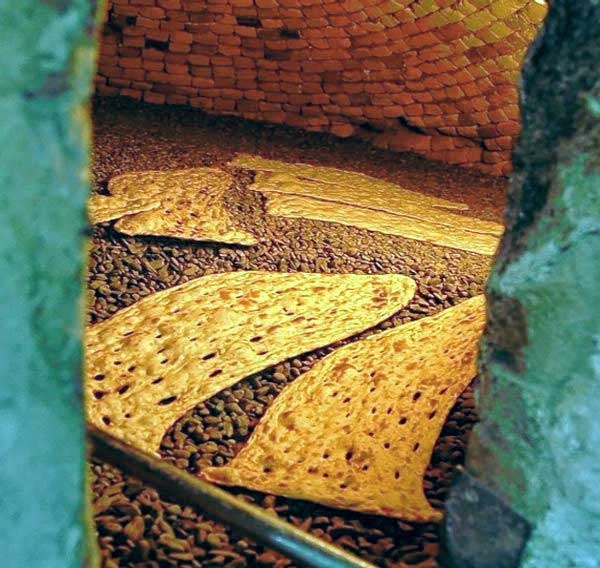
Sangak Bread, the highest quality type of Iranian Bread cooked on a bed of small stones
Here is a small list of Iranian dished served with a variety of bread:
#1 Kashk Badimjan (fried eggplant with onion, garlic, spices and a sort of drained yogurt);
#2 Mirza Qasemi, another eggplant based food served with spices, tomato, and eggs;
#3 Kala Jush, this is one of most authentic Iranian dishes, although the name is the same, but the ingredients can vary from region to region, in my region, Kerman province, it is cooked by fried nuts and onions mixed with herbs, spices and Kashk, turning into a watery soup and served with a kind of bread which is dried and should be mixed with the Kala-Jush.
#4 KU-KU, the term kuku in Persian culinary usually refers to two main Iranian fast foods, known as kuku of vegetables which is a mixture of several vegetables, spices and egg fried in oil and kuku of potato which is obviously a mixture of potato, onion, and egg fried in oil. These foods are also served with bread.
#5 DIZI, if you have already traveled to Iran or have Iranian friends you must have heard of this dish. DIZI is the typical Iranian dish, a very delicious stew of potato, tomato, red meat, beans and cereals, herbs and spices baked slowly in the small stone or ceramic pots on the fire. This food is a must try in Iran and it is best to be eaten with SANGAK bread.
#6 Persian Breakfast, this might not be a special food but it worth mentioning that bread plays a vital role in the Iranian breakfasts, no matter the region and the variety, an Iranian breakfast is not complete with the warmth and odor of fresh bread on the Sofreh.


